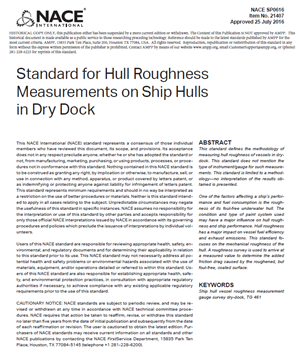Search
Products tagged with 'vessels'
View as
Sort by
Display
per page
RP0178-HD1995-SG Fabrication Details, Surface Finish Requirements, and Proper Design Considerations for Tanks and Vessels to Be Lined for Immersion Service-HD19995
Product Number:
21022-HD1995
Publication Date:
1995
$179.00
SP0616-2016, Standard for Hull Roughness Measurements on Ship Hulls in Dry Dock
Product Number:
21407-SG
Publication Date:
2016
$179.00
SP21421-2017 Pictorial Standard for underwater Evaluation of Fouling Degree on Ship Hulls
Product Number:
21421-SG
ISBN:
1-57590-379-2
Publication Date:
2017
$109.00
Step Change Epoxy Coatings for Pipes, Tanks, Vessels and Railcars
Product Number:
51218-104-SG
Publication Date:
2018
$20.00
The Curse of the Mummy: Mysterious Tank Lining Failure in WAV Vessels
Product Number:
41214-841-SG
Publication Date:
2014
$20.00
Utilizing Temporary Dehumidification For Long Term Lay-Ups of Shipping Vessels
Product Number:
41210-527-SG
Publication Date:
2010
$20.00







